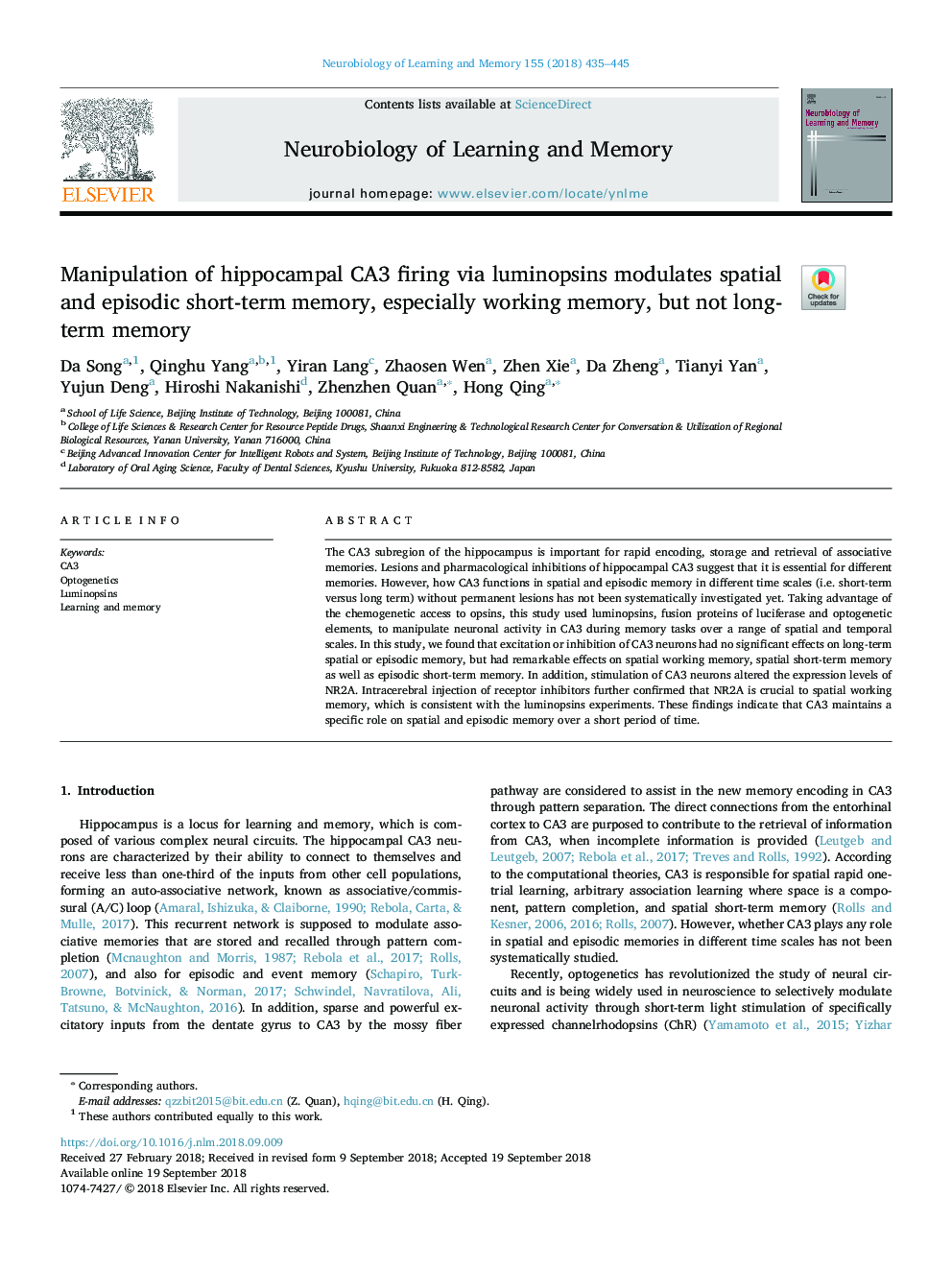| Article ID | Journal | Published Year | Pages | File Type |
|---|---|---|---|---|
| 11004569 | Neurobiology of Learning and Memory | 2018 | 11 Pages |
Abstract
The CA3 subregion of the hippocampus is important for rapid encoding, storage and retrieval of associative memories. Lesions and pharmacological inhibitions of hippocampal CA3 suggest that it is essential for different memories. However, how CA3 functions in spatial and episodic memory in different time scales (i.e. short-term versus long term) without permanent lesions has not been systematically investigated yet. Taking advantage of the chemogenetic access to opsins, this study used luminopsins, fusion proteins of luciferase and optogenetic elements, to manipulate neuronal activity in CA3 during memory tasks over a range of spatial and temporal scales. In this study, we found that excitation or inhibition of CA3 neurons had no significant effects on long-term spatial or episodic memory, but had remarkable effects on spatial working memory, spatial short-term memory as well as episodic short-term memory. In addition, stimulation of CA3 neurons altered the expression levels of NR2A. Intracerebral injection of receptor inhibitors further confirmed that NR2A is crucial to spatial working memory, which is consistent with the luminopsins experiments. These findings indicate that CA3 maintains a specific role on spatial and episodic memory over a short period of time.
Keywords
Related Topics
Life Sciences
Neuroscience
Behavioral Neuroscience
Authors
Da Song, Qinghu Yang, Yiran Lang, Zhaosen Wen, Zhen Xie, Da Zheng, Tianyi Yan, Yujun Deng, Hiroshi Nakanishi, Zhenzhen Quan, Hong Qing,
